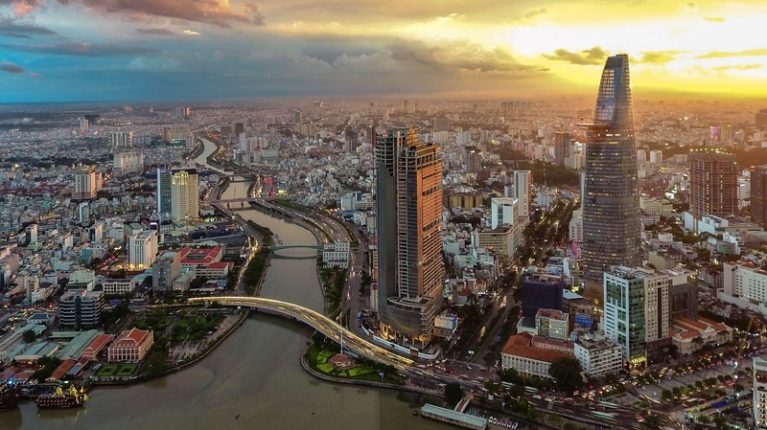Vietnam, a country near the Equator, is influenced by some types of climates. Thanks to the varied climates, the landscape of Vietnam is significantly different in each region. To have the best experiences ever had in Vietnam, visitors should be armed with some knowledge about Vietnam’s weather. In this article, ICA Travel Group would give you the instructions to assist you in choosing best months to visit Vietnam.
Best time in year
The optimal period to visit Vietnam is considered to be from December to April with pleasant temperatures and minimal rainfall. However, the ideal time to visit Vietnam can vary depending on the specific region within the country. For example, the northern parts of Vietnam can experience colder weather in December and January. Therefore, it is recommended to review the weather conditions for each region during specific months. Overall, March is widely regarded as the best month to visit Vietnam.
Types of Seasons
High season (June – July)
The peak season for travel to Vietnam typically falls in June and July. During this time, both Dutch tourists, due to their school holidays, and Vietnamese locals, who have overlapping school holidays, contribute to the increased travel activity. As a result, airports tend to be bustling, and flights may be at full capacity, particularly if you plan to explore other destinations in Southeast Asia during your trip. If you are seeking budget-friendly options, it may not be the most ideal time to visit Vietnam, along with the period of Tet (early February). Last-minute bookings for hotels and flights may prove challenging as many establishments are likely to be fully booked. Given the high volume of travelers during this period, it is advisable to plan and make arrangements well in advance to secure favorable deals on flights and accommodations.
Low season (September – October)

At this time, the children in Vietnam come back to school, therefore the number of families traveling decreases. Additionally, Vietnamese people tend to travel in summer. When the travel demands from domestic tourists are lower, the travel agencies, from airplane firms to hotels, lower the price. This is the most suitable time for tourists who prefer less budgets and less crowds during the holiday!
Rain season (monsoon season)
As with most destinations, you can still enjoy Vietnam during the monsoon season (April to October), but there are some reservations. You meet fewer travelers and many more mosquitoes during the rainy season. Negotiating better prices for accommodation becomes easier, and tours can be cheaper, but outdoor activities become soaked experiences. Transport delays happen. Buses may not run during long periods of heavy rainfall, because sometimes roads get flooded and become more dangerous to drive.
Typhoon season
Although nature does not always play by the rules, hurricane season (typhoon season) usually ends every December around December. The start dates depend on which part of Vietnam: north, central or south. In general from August to November and October is generally the most stormy month.
Rice fields season
If you have ever dreamed of seeing the beautiful golden rice fields, be on time, the harvest season only lasts 1 month! Vietnam has beautiful rice fields in different locations in the countryside from north to south.
Terraced fields in the mountainous provinces in the north of Vietnam are the best at the end of September and October, when the harvest season starts and then show beautiful colors.
Best time to visit Vietnam per region
North Vietnam
Northern Vietnam, encompassing destinations such as Hanoi, Halong Bay, Sapa, Mai Chau, and Ninh Binh, experiences distinct winter and summer seasons. The winter season, extending from November to April, is characterized by cool temperatures and relatively dry conditions. During this period, the average temperature ranges from 17 to 22 °C, with the coldest months occurring between January and March. In contrast, the summer season spans from May to October, bringing hot and humid weather along with the highest levels of rainfall. Typically, the months of July to September receive the most significant amount of rainfall throughout the year.
Central Vietnam
Central Vietnam (Hoi An, Da Nang, Hue) has warm and dry weather from mid-January to the end of August, with temperatures often reaching mid-30 degrees. During the winter months, rainfall increases with the peak levels in October and November, sometimes in the form of typhoons.
South Vietnam
The southern region of Vietnam, encompassing areas such as Ho Chi Minh City, the Mekong Delta, Mui Ne, and Phu Quoc, experiences a relatively consistent temperature throughout the year. The climate in this region can be broadly divided into two distinct seasons: the dry season and the wet season.
The dry season typically begins in November and continues until April or the beginning of May. During this period, the weather is generally drier, and temperatures remain relatively constant. Towards the end of February to May, the weather tends to become slightly warmer and more humid.
On the other hand, the wet season in the southern region lasts from May to early November. This period is characterized by increased rainfall and higher humidity levels. Among these months, June, July, and August usually receive the most substantial amount of rainfall throughout the year.
Overall, ICA Travel Group gave you some information to decide your best months to visit Vietnam. If you have any questions, contact us and we are willing to accompany you for your Vietnam dream tour.






